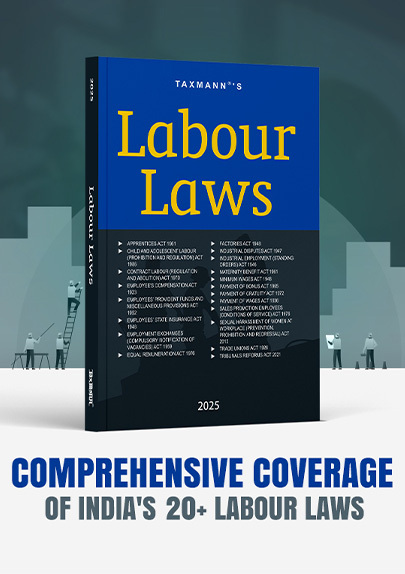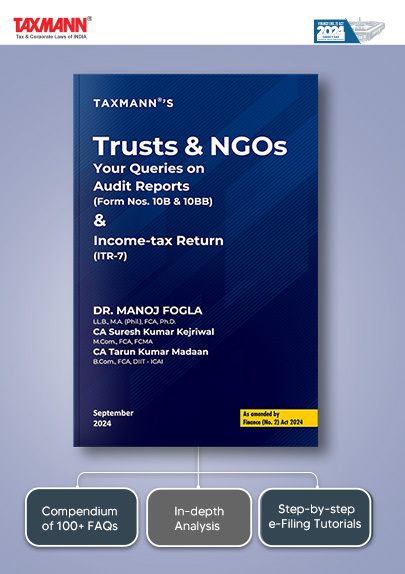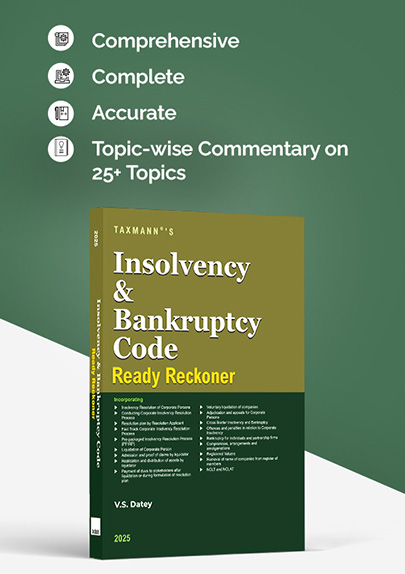[Opinion] Computation of Income from Service Contracts under Section 43CB of the Income-tax Act, 1961
- Blog|News|Income Tax|
- 2 Min Read
- By Taxmann
- |
- Last Updated on 9 January, 2025
CA Aakansha Tuteja & Kanav Agarwal – [2025] 170 taxmann.com 116 (Article)
1. Introduction
Section 43CB of the Income Tax Act, 1961, introduced by the Finance Act of 2018 with retrospective effect from April 1, 2017 lays down provisions for the computation of income from construction and service contracts. The said section ensures a consistent approach for taxing such contracts by introducing a specific method of computation.
2. Overview of Section 43CB
Section 43CB mandates that income from service contracts must be computed in accordance with the Percentage of Completion Method (POCM). This method ensures that revenue is recognized progressively as the service is performed rather than deferred until the entire contract is completed. The provision reflects the fundamental accounting principle of accrual, aligning taxable income with the actual performance of the contract.
Introduced to standardize income recognition, Section 43CB reduces the scope for ambiguity and tax avoidance. It applies to various sectors, including construction, engineering consultancy, IT services, and other professional engagements where service delivery spans multiple accounting periods.
3. Provisions of Section 43CB
3.1 Applicability of Section 43CB
Section 43CB is applicable to:
- Construction Contracts: Where work is done progressively over time, revenue is recognized based on the percentage of work completed, and income is taxed as the work is done.
- Certain Service Contracts: For service contracts where the work is done over a period of time (such as maintenance, consulting, or installation), Section 43CB applies similarly, recognizing income progressively based on the percentage of completion.
3.2 Method of Income Recognition
The profits and gains arising from a contract for providing services shall generally be determined using the percentage of completion method (POCM), in accordance with the income computation and disclosure standards notified under section 145(2).
3.3 The Percentage of Completion Method (POCM)
The Percentage of Completion Method (POCM) is a method used for recognizing income in relation to long-term contracts, especially construction contracts and certain service contracts where work spans more than one accounting period.
Click Here To Read The Full Article
Disclaimer: The content/information published on the website is only for general information of the user and shall not be construed as legal advice. While the Taxmann has exercised reasonable efforts to ensure the veracity of information/content published, Taxmann shall be under no liability in any manner whatsoever for incorrect information, if any.

Taxmann Publications has a dedicated in-house Research & Editorial Team. This team consists of a team of Chartered Accountants, Company Secretaries, and Lawyers. This team works under the guidance and supervision of editor-in-chief Mr Rakesh Bhargava.
The Research and Editorial Team is responsible for developing reliable and accurate content for the readers. The team follows the six-sigma approach to achieve the benchmark of zero error in its publications and research platforms. The team ensures that the following publication guidelines are thoroughly followed while developing the content:
- The statutory material is obtained only from the authorized and reliable sources
- All the latest developments in the judicial and legislative fields are covered
- Prepare the analytical write-ups on current, controversial, and important issues to help the readers to understand the concept and its implications
- Every content published by Taxmann is complete, accurate and lucid
- All evidence-based statements are supported with proper reference to Section, Circular No., Notification No. or citations
- The golden rules of grammar, style and consistency are thoroughly followed
- Font and size that’s easy to read and remain consistent across all imprint and digital publications are applied






 CA | CS | CMA
CA | CS | CMA


